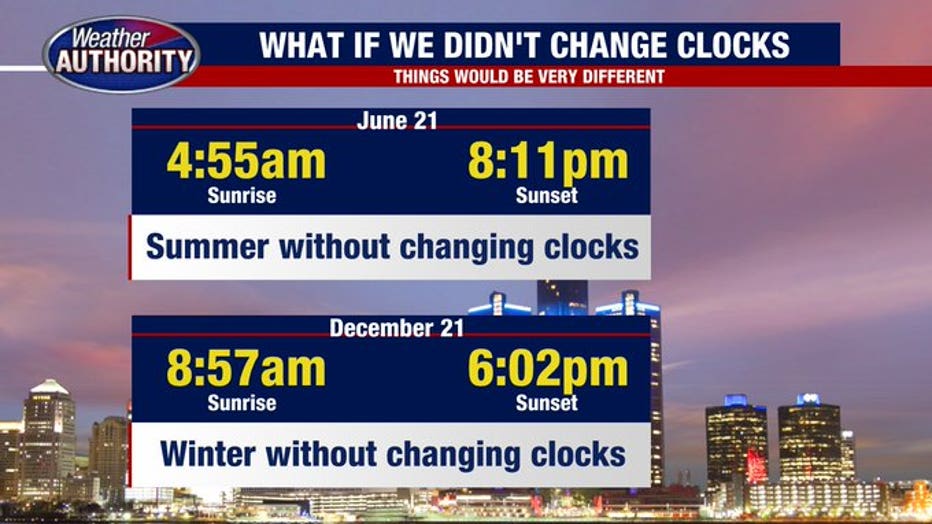How Michigan sunrise and sunset times change without Daylight Saving Time
(FOX 2) - What if we didn't have Daylight Saving time?
What if U.S. citizens didn't spring forward in March and back in November?
The sunrise and sunsets of the longest and shortest days of the year would certainly feel different. During the summer solstice, the sun would be greeting us in Michigan before 5 a.m. And during the shortest day of the year? We wouldn't see the sun until practically 9 a.m.

The day after this very American phenomenon isn't always an easy one. People lose an hour on their weekend while some commuters find themselves back in the dark while driving to work.
It's what has prompted the Monday after clocks jump forward 60 minutes to be National Napping Day.
The unofficial day of slumber was created by William Anthony and his wife Camille Anthony in 1999. The couple wanted to highlight the health benefits of getting enough sleep, which is why the day is observed the Monday after daylight saving time — when the country "springs" forward.
RELATED: What is National Napping Day?
Despite being a regulated part of American life since 1966, there appears to be real momentum behind ending the tradition once and for all. Doctors have cited health dangers for those operating on less sleep while the original reasons for the time jump have become moot.
Several states have either passed legislation or resolutions calling on the federal government to lift the limitations on required time changes in the last few years.
The 18 states that have called on action on the time regulations are not alone, a poll conducted by YouGov for The Economist found around 63 percent of Americans agree that a change is needed.
The proposed federal bills that would change regulations have seen little action in congress, and it is a fight that some states have advocated for, for decades.

